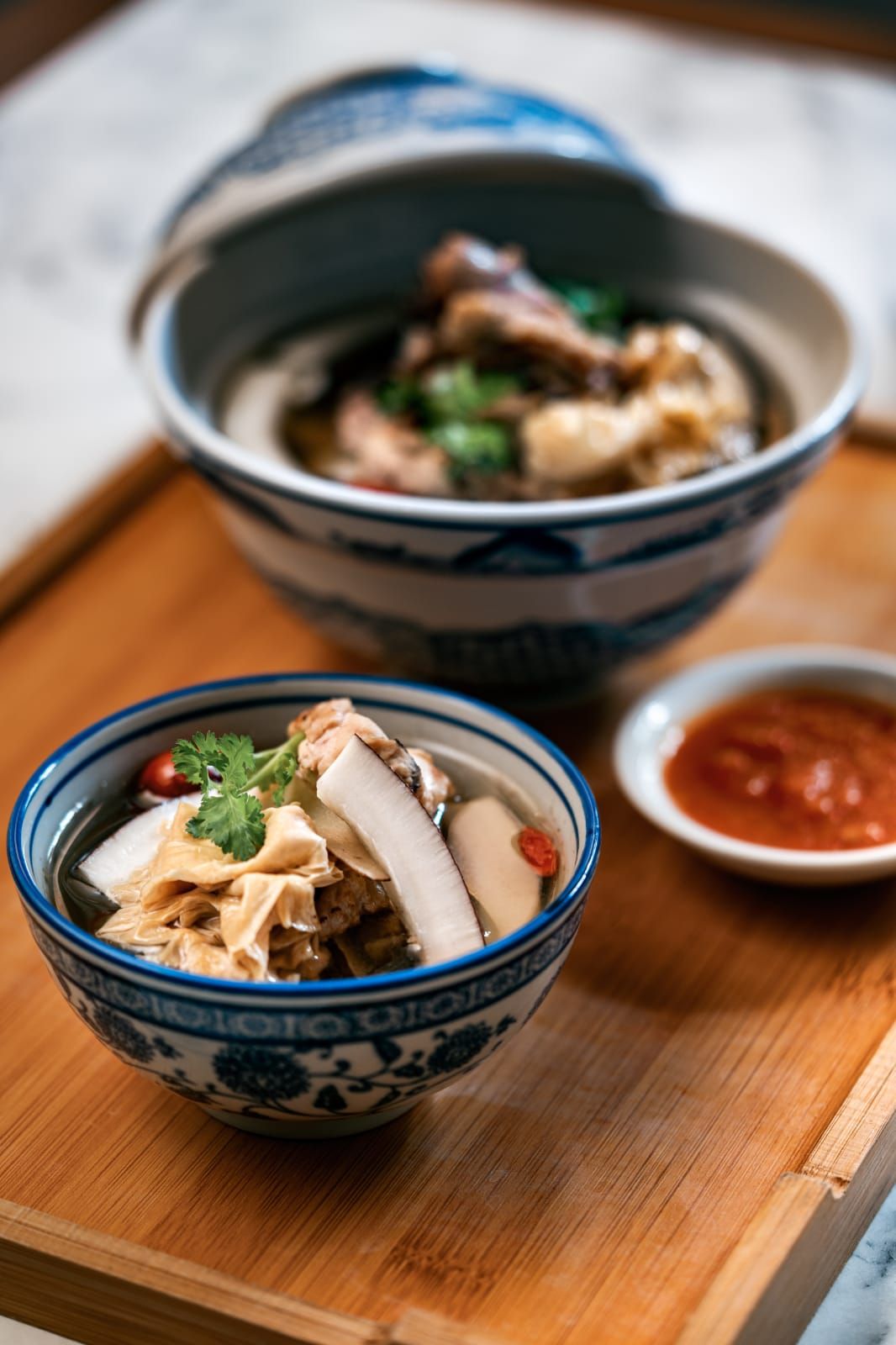Acclaimed chefs at Crystal Jade, Summer Palace and Pang’s Hakka Noodles ponder the allure and significance of their favourite home‑cooked Lunar New Year dishes
There is much to appreciate about Singapore’s diverse dining landscape. The breadth of authentic fare across a range of Chinese cuisines alone is inspiring, with many notable renditions of traditional dishes—across several dialects, to boot—standing the test of time.
These, thankfully, include several must-haves gourmands seek at the annual Chinese New Year feast. But as wildly popular the lush options like Peking duck and pen cai continue to be, we should remember that there is a host of less commercial classics that families look forward to whipping up year after year—proving in the process that the best way to preserve such time-honoured recipes is to cook them at home.
From Father to Son
For chefs like Liu Ching Hai of fine dining Cantonese restaurant Summer Palace, the significance of heirloom dishes at the celebratory table cannot be underestimated, citing as a fine example a dish of steamed pearl garoupa with banana blossoms, black fungus and red dates prepared in the traditional Cantonese style. “My earliest memory of the dish is my paternal grandmother making it, and I don’t remember a Chinese New Year without it,” the Hong Kong-born chef shares, noting as well the significance of serving a whole fish, which in his culture symbolises a good start and end to the year.
To be sure, the ingredients used are part of a calculated move to ensure Lady Luck has the backs of those who partake in the feasting. Yet, despite the obvious and necessary pageantry that accompany a Chinese New Year meal, some of the best examples of treasured dishes passed down through generations are surprisingly modest dishes that have earned their place at the family table.
(Related: Hashida Singapore Returns With Fresh Perspectives on the Modern Sushi Experience)

This fish dish, for instance, uses banana blossoms, which when dried, resemble golden needles. “This is significant because it alludes to an abundance of wealth,” Liu explains, as do affordable everyday ingredients such as dates and mushrooms, which are also meant to invite success and prosperity. He particularly loves the dish’s comforting fragrance and how, in spite of its humble origins, most people consider it a spectacular dish, highlighting its popularity at wedding banquets. He adds: “At home, my wife and I enjoy the head of the fish, while my kids don’t fight us for this piece and are happy to eat the tail and body—everyone wins!” There is indeed much to love about the dish, but particularly how “the ingredients come together very harmoniously with a splash of hua diao wine, oyster sauce and corn starch,” he explains. “[The preparation] was always in the hands of my paternal grandmother until it got passed down to my father and eventually to me. I hope to pass it down to my sons and for them to carry on its legacy.”
A Blessing and A Responsibility
Over at the home of Martin Foo, group executive chef of Crystal Jade, the dish he and his family look forward to this time of the year is one close to the hearts of the Hainanese community. “Coconut chicken is a dish that originated in Hainan, China, and it is one of the more famous dishes in Hainanese cuisine,” Foo affirms. “It is a refreshing and light soup that combines the sweetness of coconut water (Hainan is well-known for its coconuts) with the savoury and meaty flavour of chicken,” he continues, taking time to expound on what he feels is the essence of Hainanese cuisine. Compared with other Chinese dialect cuisines, dishes “are generally lighter”, requiring less elaborate preparations and simple ingredients.
(Related: Chinese New Year Reunion Dinner Menus for Delivery and Takeaway)

